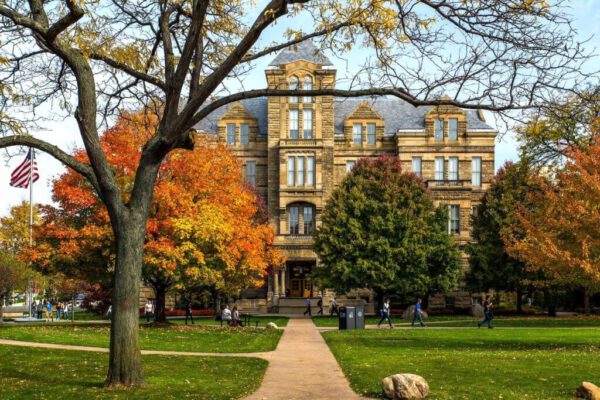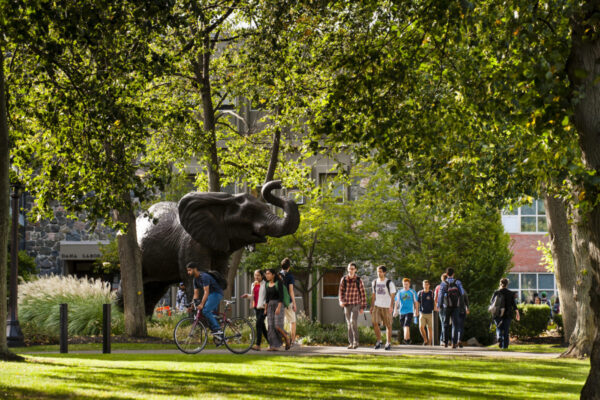By Robin M. Helms
I’m not a professor, but I play one on TV.
Okay, maybe not on TV, but my professional life does look a lot like that of a faculty member. My primary focus at ACE is research—with a healthy dose of administrative work thrown in. I’m an adjunct at American University, and on a more regular basis, get my teaching fix as a yoga instructor. When all is said and done, I’ve got the professorial “big three” activities pretty well covered.
And like many faculty members, I have a keen interest in tenure and promotion, both formal policies and the “lived reality” of how the process plays out on campuses. Granted, the interest is academic rather than personal for me. But having worked in the office of the vice provost for faculty and academic affairs at the University of Minnesota, I’ve certainly seen how high the stakes are for individual faculty, and I can appreciate the importance of solid, well-designed policies and procedures.
I also have a fairly unique cross-institutional perspective on T&P policies. For a recent ACE study on how international activities and engagement are rewarded (or not) in the tenure process, I analyzed 91 tenure policy documents from 61 U.S. institutions. Beyond the particular focus of this project, I couldn’t help but put myself in the shoes of a junior faculty member as I looked across all these policies.
Not surprisingly given the diversity of institutions in the United States, there is huge variation among tenure codes in terms of format, content, focus and pretty much any other variable you can imagine. In the report, we likened the process of analyzing and trying to draw conclusions across this variety to “sorting snowflakes.”
Nonetheless, from my pseudo-junior-faculty-member perspective, I found myself noting particular characteristics I liked and disliked among the codes, eventually developing a tenure process “wish list”—i.e., what I would like to see in tenure policies and procedures if I were about to go through the process myself. Three main points stood out:
1. Articulate how faculty members’ work fits into the bigger institutional picture.
One of the key revelations from our study was that in terms of internationally focused criteria, there was a notable disconnect between tenure and promotion requirements and the institutions’ stated goals for internationalization. The latter focus on student learning and bringing a global dimension to the curriculum, whereas the former include few mentions of international activities in the teaching realm. There was also no apparent relationship between institution type (e.g., research-focused versus baccalaureate) and the emphasis of the criteria in terms of faculty activities. As a prospective tenure-ee, I found that disconnect pretty unsettling—images of running on a hamster wheel or working in a vacuum came to mind.
But those policies that include clear statements about institutional mission and strategy, explicitly connect faculty expectations to institutional goals, and contain criteria that map closely onto those goals seem to make the process—and all the associated stress—more worth it. They send a message that the considerable effort required to meet tenure criteria is not just about jumping through a series of hoops and checking off boxes; it’s about playing a part in something bigger and contributing to the greater good of the institution. Perhaps a desire for this kind of meaning and connection is a Gen-X thing, but it’s important to me, and probably to a lot of other junior faculty out there, too.
2. Make it clear that the tenure process is a two-way street.
Some tenure codes look like a laundry list of requirements: In reading through them, it was easy to feel overwhelmed by the depth and breadth of demands and expectations. Donning a junior faculty member hat (and perhaps fulfilling a few Gen X stereotypes), at times I wanted to ask, “Okay, but what are YOU going to do for ME?” In particular, the codes raised questions about faculty professional development opportunities and the availability of support to make sure faculty members are able to achieve the criteria set forth.
In the international realm, for example, one of the most common activities we found among the criteria was presenting at international conferences. At the institutions that ask faculty to do this, is there funding available to support international travel? If faculty are encouraged to internationalize the content of their courses, are there workshops available to help them do this? Is there readily accessible IT support to help them connect their classrooms with their counterparts in other countries?
Few, if any, of the tenure policies I analyzed contain explicit reference to professional development opportunities. Maybe the policy documents themselves are not the place for this, but I would want to be informed—in one way or another—about available resources as well as how they related to specific tenure criteria. At the University of Minnesota, the vice provost for faculty and academic affairs presented workshops on T&P open to faculty across the institution. Workshops such as these would be a logical venue for such conversations, but department chairs or college deans may be in the best position to help junior faculty tap into resources and opportunities at both the institution and unit levels.
A positive tenure decision is the start of a long relationship between the institution and a faculty member. If I were beginning my academic career, I’d be looking for signs that the relationship to come would be characterized by mutuality and reciprocity. The tenure process is a good place to lay the foundation for a such a relationship.
3. Let faculty tell their story, but help them make sure it’s compelling.
Among the 91 tenure policies I looked at, the most intimidating were the ones at the extreme ends of the continuum of specificity. Those that took a checklist form seemed rigid. What if my work didn’t fit into these very neat and defined boxes? Would that mean it wouldn’t “count” towards tenure? On the other hand, a blank canvas was a daunting as well. If I needed to make the case that I deserved tenure, what should I emphasize? Where should I even start?
The middle road seems most effective. Providing faculty with building blocks—specific activities that are closely aligned to institutional mission—but also giving them the freedom to shape their own narrative and make the case for how their work furthers that mission, strikes a positive balance.
Looking again at international content in particular, the tenure policy for the University of Florida Institute of Food and Agricultural Sciences, which is excerpted in our report, provides a great example. It includes a number of specific internationally focused activities that will be viewed positively in tenure decisions, but also asks faculty to articulate how these activities and other global work advance the institutions’ internationalization goals. At Purdue’s College of Technology (another case example from the report), the dean works with individual faculty to craft their dossiers, advising them how to highlight particular accomplishments in order to tell a compelling story and make the strongest possible case for tenure.
The tenure process is daunting by nature. But knowing that there’s a vision and strategy behind the requirements and that the institution is setting candidates up for success would, in this not-quite-a-faculty-member’s point of view, be a sign of positive things to come in what (fingers crossed) will be a long and fulfilling relationship.
At least that’s what I’ll tell the script writers if I ever really do get to play a professor on TV.
If you have any questions or comments about this blog post, please contact us.


